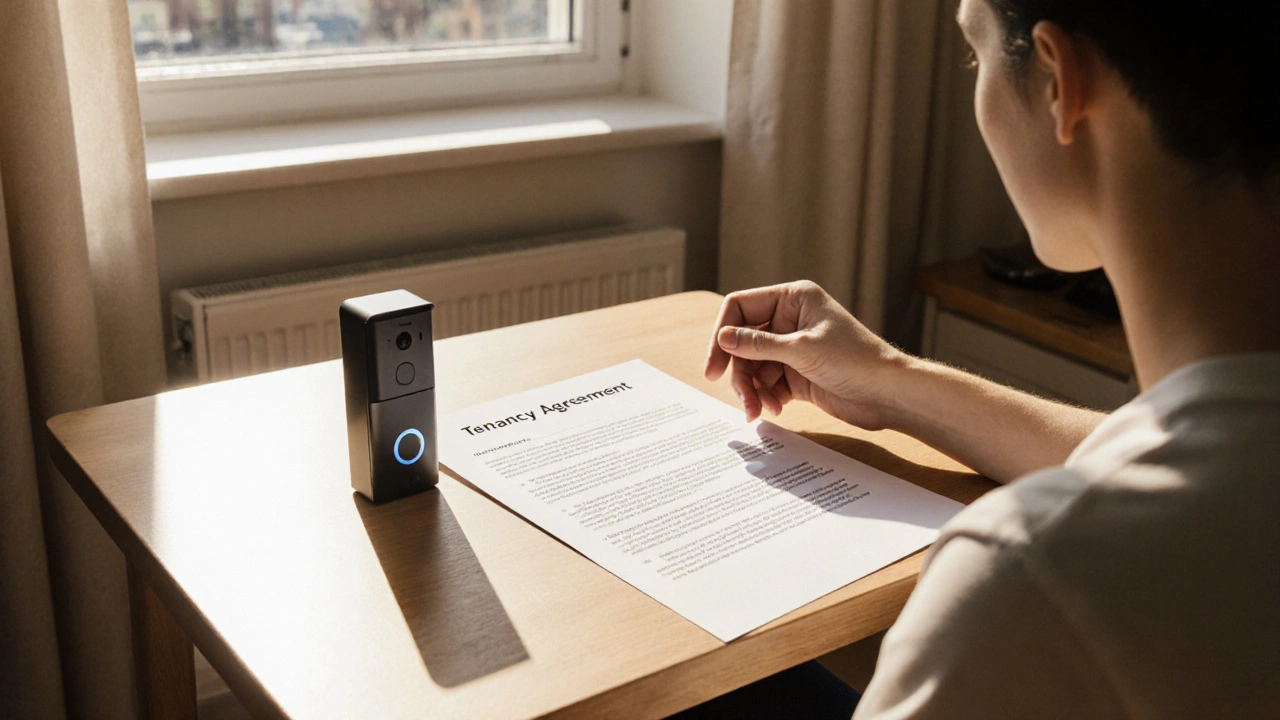When dealing with UK apartment doorbell rules, the set of legal and building‑policy requirements that govern how doorbells can be installed and used in rented flats across the United Kingdom. Also known as rental doorbell regulations, they dictate everything from wiring standards to privacy expectations.
A typical video doorbell, a smart device that records footage and streams it to a smartphone must meet these rules, especially when it’s a Ring Doorbell, the popular branded doorbell that many UK renters choose. The rules encompass three core ideas: privacy safeguards, installation standards, and crime‑deterrence potential.
First, privacy. Landlords and tenants alike must ensure that any camera feed stays within the private space of the flat and does not spill onto shared corridors or neighbours’ windows. The regulations require clear signage that a recording device is present, and they forbid continuous audio capture without explicit consent. This protects both parties from accidental breaches and keeps the building’s data handling on the right side of the law.
Second, installation. The law treats doorbell wiring as an electrical work item, meaning a qualified electrician should do the job unless the device is truly wireless and battery‑powered. An improperly wired doorbell can trigger fire alarms, cause voltage spikes, or void the building’s insurance policy. Landlords often include a clause in the tenancy agreement that any smart doorbell installation must be approved in writing and carried out by a certified professional.
Third, crime deterrence. Studies from UK police forces show that visible video doorbells can reduce opportunistic break‑ins by up to 30 %. The rules therefore encourage the use of visible lenses and clear indicator LEDs, as long as they don’t flash into neighbours’ bedrooms. When a video doorbell complies with the standards, it becomes a legitimate tool for both tenant safety and landlord risk management.
In practice, these three pillars interlock. For example, a tenant who wants a battery‑operated video doorbell must still confirm with the landlord that the device won’t breach privacy walls, and the landlord must verify that the unit’s Wi‑Fi antenna won’t interfere with the building’s shared network policies. This creates a tidy loop: UK apartment doorbell rules ensure that tech upgrades improve security without creating new legal headaches.
Another angle many renters overlook is data storage. The regulations stipulate that footage should be kept on local storage or a secure cloud service that complies with UK data‑protection standards. Using a third‑party cloud that isn’t GDPR‑compliant can lead to hefty fines for the landlord, and tenants could face civil claims if their personal moments are exposed. Choosing a doorbell that offers encrypted storage or an optional local SD‑card solves the problem and aligns with the rule‑book.
Finally, it’s worth noting that the rules evolve with technology. When new features like facial recognition or AI‑driven motion detection roll out, the existing framework will be updated to address their specific privacy implications. Keeping an eye on announcements from the Housing Ombudsman or the Home Office helps both landlords and tenants stay ahead of the curve.
Below you’ll find a curated collection of articles that dive deeper into each aspect—privacy best practices, step‑by‑step installation guides, crime‑deterrence data, and reviews of the most popular video doorbells on the UK market. Whether you’re a tenant looking to upgrade your flat or a landlord ensuring compliance, the posts ahead give you actionable insight and real‑world examples to make informed decisions.

Find out if a Ring Doorbell is legal in a UK flat, how tenancy agreements, GDPR and building rules affect installation, and the steps to get permission or choose alternatives.